As an Amazon Associate, I earn from qualifying purchases with no additional costs for you.
Modern geological methods of mineral identification are far more complicated than people used to think. The work life of professional geologists, mineralogists, and gemologists (or we can call them scientists) is very different from stereotypical perception. A geologist is not a person with a hummer and paper map anymore. Computer modeling, satellites, state-of-the-art laser-based, and X-ray methods are an integral part of a scientist.
Modern geological and mineralogical methods of mineral and rock identification are Electron Probe Microanalysis (EPMA), X-Ray Fluorescence Spectrometry (XRF), Raman spectroscopy, Fourier Transform Infra-Red (FTIR) spectroscopy, and Ultraviolet-visible-Near Infra-Red (UV-vis-NIR) spectroscopy.
Can you imagine identifying just a millimeter-size unknown mineral without crystallographic features of strange hardness and genesis in a minute? Modern spectroscopic methods can do it!
Or another mindblowing example is to identify the deposit of faceted gemstone based on trace elements, just taking the amount of material less than a needle head. Awesome!
So further, you will learn some more examples and, more importantly, get acquainted with modern geology, mineralogy, and gemology techniques.
Even if you are not so interested in working with advanced equipment or methods names sound difficult, this article can still be helpful, as you can come across the methods mentioned in articles or mineral descriptions.
We will focus on what you can do with these techniques rather than the physical principles of operation. And all equipment looks like a spacecraft, don’t miss an opportunity to see it!
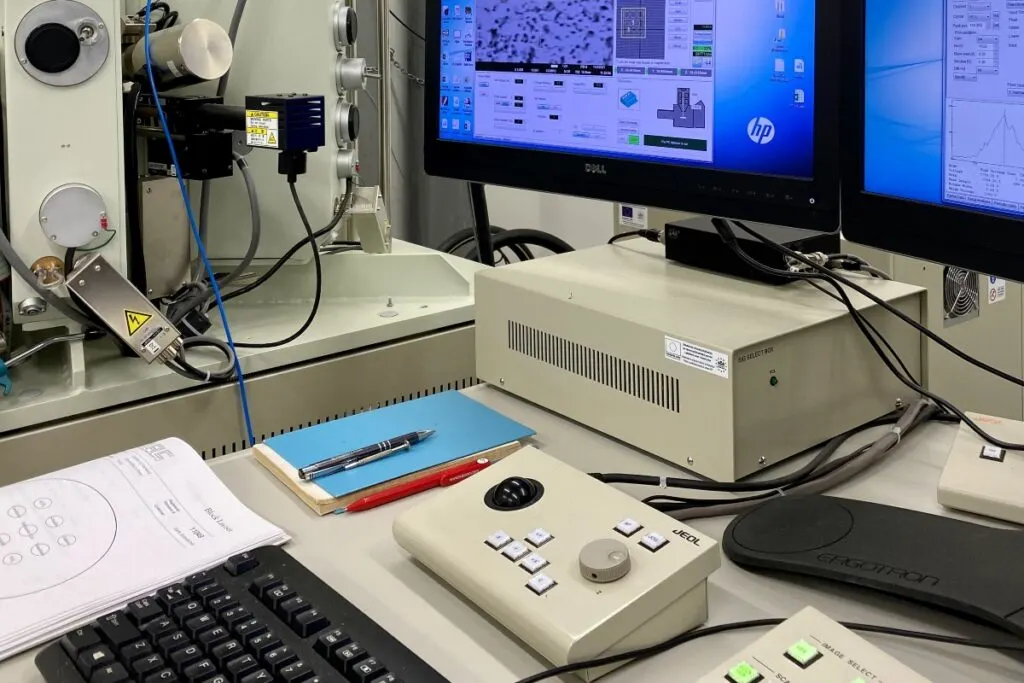
If you are interested in checking out the best rock and mineral identification books, you can find them by clicking here (Amazon link).
How do geologists identify minerals?
Professional geologists rarely identify rocks and minerals with hardness, luster, or streak tests. These can be helpful during the fieldwork for the first approximation, but in most cases, scientists can identify the most common rock-forming minerals at a glance.
Unknown minerals are carefully examined under a microscope and later checked by advanced methods we will shed light on.
Geologists identify minerals using the following methods primarily. They are Electron Probe Microanalysis (EPMA), X-Ray Fluorescence Spectrometry (XRF), and Raman spectroscopy. Choosing the method depends on the state of the sample, whether it is a crystal, a rock, or a faceted stone.
One sign of professionalism is to choose the correct method. Every method is created to solve different tasks. First of all, a scientist should decide whether it is possible to distract a sample or not. Such methods as X-Ray Fluorescence Spectrometry (XRF) and Raman spectroscopy are considered non-destructive. For these two methods, no complicated sample preparation is needed. Other methods can be applied in cases where the sample can be cut and polished.
BTW: Do you want to know more about rock and mineral identification? The books listed below are the best ones you can find on the internet (Amazon links):
- Smithsonian Handbooks: Rocks & Minerals
- Gemstone & Crystal Properties (Quick Study Home)
- Ultimate Explorer Field Guide: Rocks and Minerals (National Geographic Kids)
How does EMPA (Electron Probe Microanalysis) work
An electron microprobe (EMP), also known as an electron probe microanalyzer (EPMA) or electron microprobe analyzer (EMPA), is an essential tool in modern geological studies. Most newly discovered minerals are usually found due to an electron probe microanalyzer.
Electron Probe Microanalysis determines the chemical composition of minerals. Each mineral is composed of chemical elements in various proportions. Therefore, this method can tell you exactly what elements and quantity the mineral is composed of, making identifying even scarce minerals easy.
The most significant advantage of EMPA is that you can see the sample on display. Just choose a point on the screen, and in a few moments, you will have a list and percentage of elements (in oxide form) of the mineral under this point is composed of.
The ability to see a sample surface in real-time under huge magnification gives you a variety of opportunities: you can easily find needed mineral grain, zoom in and zoom out, make a photo of mineral textures, see zones in mineral and find out what element creates zoning and even to build a map of chemical elements and their concentration.

TIP: A Mohs hardness test is one of the most valuable tricks that should be in all rockhounds’ playbooks. Check out the best Mohs hardness kits in the article below:
3 Best Mohs Scale Test Kits: Test Hardness of Your Gemstones
What Spectroscopic methods are used in geology
There are a lot of different spectroscopic methods geologists, mineralogists, and gemologists deal with. Some small pocket optical spectrometers are usable for rough and fast mineral identification. However, scientists prefer giant machines that can help with a broader list of tasks.
Spectroscopic methods used in geology, mineralogy, and gemology are X-Ray Fluorescence Spectrometry (XRF), Raman spectroscopy, Fourier Transform Infra-Red (FTIR) spectroscopy, and Ultraviolet-visible-Near Infra-Red (UV-vis-NIR) spectroscopy.
You may be wondering why there are so many spectroscopic methods. The answer is they serve different purposes and solve various tasks. There is no universal method to resolve everything at once, like no universal doctor who can cure everything.
Spectroscopic methods are based on the principle of absorption of light (electromagnetic waves). Certain elements absorb light at particular wavelengths, and the machine determines how much light is absorbed in each wavelength.
So, you see a graph with bands of different intensities on the screen. Every mineral has its unique spectrum. Comparing a spectrum with a database helps to identify minerals very quickly.
Raman spectroscopy
Raman spectroscopy is one of the most crucial methods in modern geology, especially gemmology. It is absolutely non-destructive, which means no material should be destroyed to conduct an analysis. At the same time, the method is so precise that it can identify an invisible to the naked eye inclusion in a gemstone.
Commonly, Raman spectroscopy is used to make the first identification of a mineral sample. The most significant advantage of methods is the absence of sample preparation and fast measurement.
Surprisingly, it also works on mounted gemstones, so there is no need to unmount a stone from a piece of jewel. Raman spectroscopy is a prominent tool to spot fake, treated, and lab-grown gems.

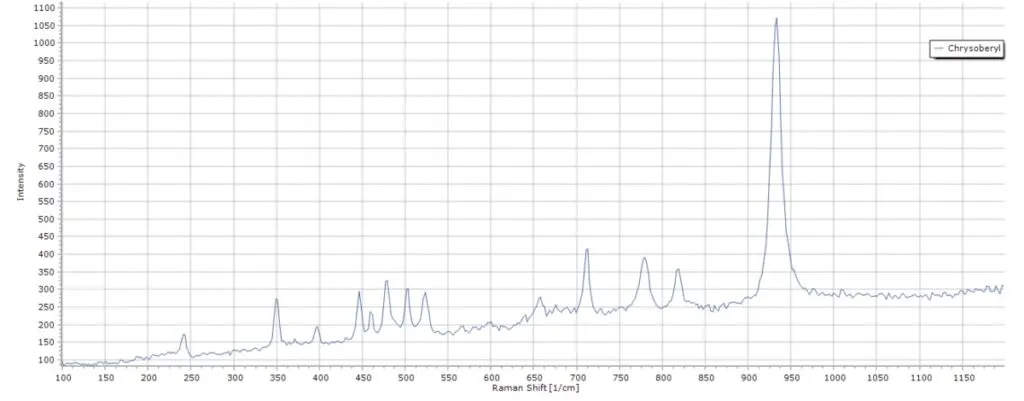
Fourier Transform Infra-Red (FTIR) spectroscopy
Fourier Transform Infra-Red (FTIR) spectroscopy, or more simply Infra-Red spectroscopy, is similar to Raman spectroscopy but focuses more on water-bearing minerals and organic materials. It is essential for jade, emerald, and turquoise treatment identification.
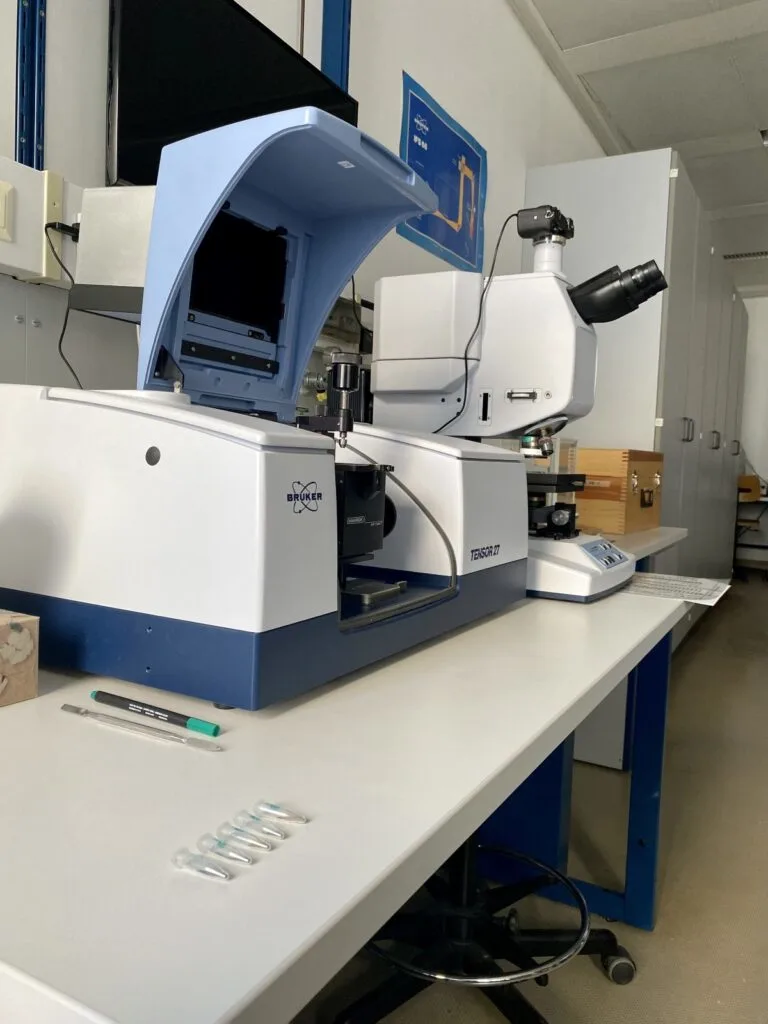
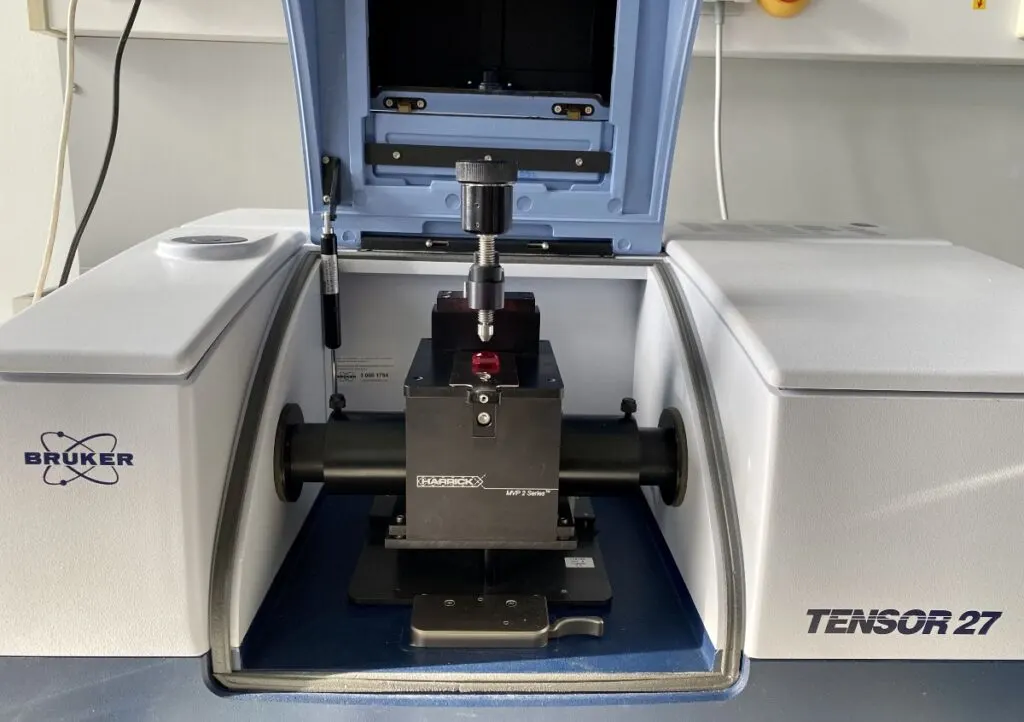
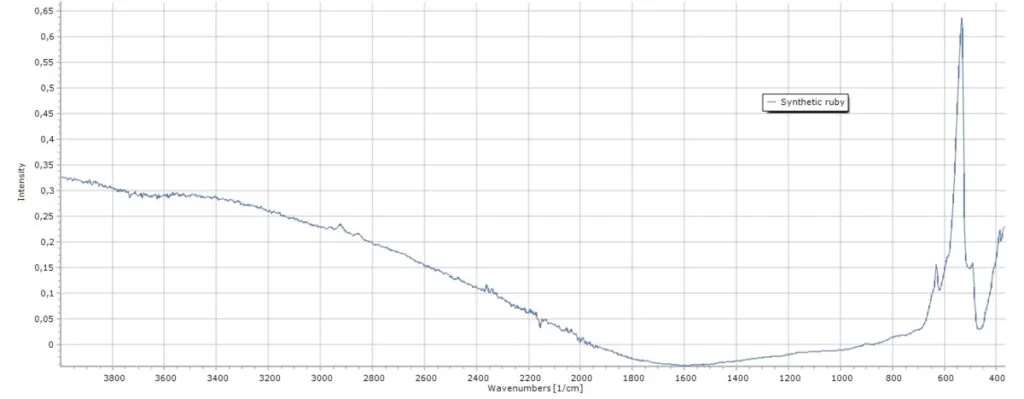
Ultraviolet-visible-Near Infra-Red (UV-vis-NIR) spectroscopy
UV-vis-NIR spectroscopy principles are similar to your pocket spectroscope; however, this one is a fully digitized instrument that can view a broader range of wavelengths.
It is used to identify an element or ion which creates mineral color. Some color treatments of gemstones are also detectable.
X-Ray Fluorescence Spectrometry (XRF)
X-Ray Fluorescence Spectrometry (XRF) is a method of studying the chemical composition of a mineral sample. Unlike EMPA, there is no need to polish a sample surface.
It is a fast identification method to differentiate between common and copper-bearing tourmaline Paraiba or green beryl and Cr-bearing emerald.
TIP: The best books for identifying rocks and minerals are those written by real geologists and mineralogists with scientific or fieldwork experience. Find them out in the article below:
5 Best Books for Identifying Rocks & Minerals You Must Read
Where I can test my rock using modern geological equipment
To test a rock or mineral sample using modern geological equipment, you can check your local natural science universities and geological surveys. If you want your gemstone to be tested, sending a sample to trustworthy international gemological laboratories is also a good option.
Natural scientists are curious people who will be happy to solve another nature mystery and identify a stone for you. Sometimes there are some spots on mineral shows where geologists help identify the visitors’ rocks.
You can also contact any university directly. Another possible variant to find a piece of advanced equipment is to refer to your local natural museum. Sometimes museums have their laboratory and researchers.
What is sample preparation?
Sample preparation is a procedure of making a rock sample suitable for testing. Most methods require at least one smooth and polished facet of the mineral samples. Luckily, some crystals already have natural facets. Some methods do not require sample preparation, and rough material can be measured.
One general rule of simple preparation is that a sample should be clean. Advanced methods are susceptible, so they can surprisingly find some organic or dust particles. Clean your rock sample with warm water and a brush.
Mineral crystal samples can also be cleaned with water or alcohol. Gemstones can be cleaned with water and gem cloth. If you need help cleaning your sample, leave it as it is and ask a professional.
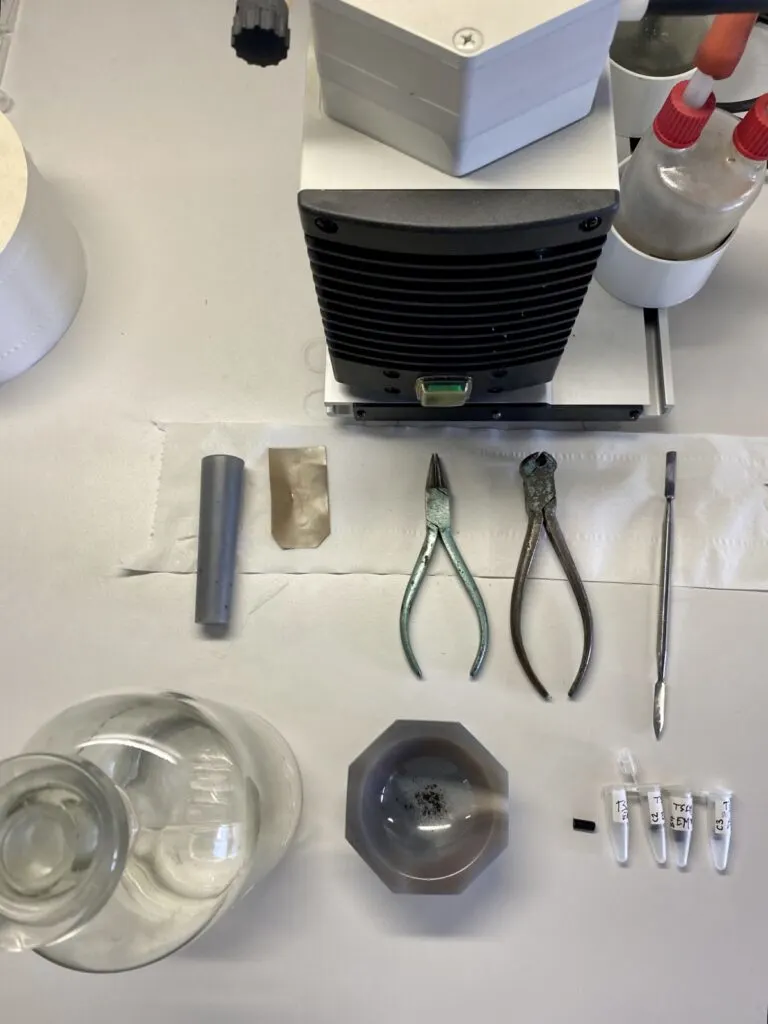
Sample preparation for advanced methods measurements depends on whether it is a non-destructive or a destructive method. For example:
- EMPA requires a standardized cross-section with a polished surface placed into resin for stability.
- Raman spectroscopy usually doesn’t require any sample preparation for crystals and gemstones. For rough mineral surfaces and rocks, one smooth facet should be polished.
- Fourier Transform Infra-Red (FTIR) spectroscopy also requires one polished surface for quick identification; for advanced measurements, a transparent or semi-transparent cut plate with parallel facets or minerals grounded into powder is required.
- Ultraviolet-visible-Near Infra-Red (UV-vis-NIR) spectroscopy also works with transparent semi-transparent materials for a light beam to go through. A thin plate is required for the test.
- X-Ray Fluorescence Spectrometry (XRF) is also a method that can be run without any preparation. Sometimes for better quality results, the material can be ground into powder.
BTW: If you are looking for the best UV light for rockhounding, find out my picks below (Amazon links):
- BEST OPTION: Convoy 8+ 365nm UV LED Flashlight with Patented Glass Filter
- BUDGET OPTION: Karrong Rechargeable 1200 Lumen 395nm UV Flashlight
- OPTION FOR INDOOR USAGE: Prime Upgraded Big Chip 396nm UV
Conclusion
There are a lot of different methods to study rocks and minerals. We have covered only some of them:
- Electron Probe Microanalysis (EPMA),
- X-Ray Fluorescence Spectrometry (XRF),
- Raman spectroscopy,
- Fourier Transform Infra-Red (FTIR) spectroscopy, and
- Ultraviolet-visible-Near Infra-Red (UV-vis-NIR) spectroscopy
Based on the material from the article, you can already decide what methods suit you better. You can also choose whether you can allow your sample to be partly damaged to get the material for measurement (Electron Probe Microanalysis (EPMA), Fourier Transform Infra-Red (FTIR) spectroscopy, and Ultraviolet-visible-Near Infra-Red (UV-vis-NIR) spectroscopy), or if it is a gemstone and is not allowed to be destructed (X-Ray Fluorescence Spectrometry (XRF), Raman spectroscopy, Fourier Transform Infra-Red (FTIR) spectroscopy).
The article also helps you to choose the correct method based on your goal, whether you need only to identify an unknown mineral (Electron Probe Microanalysis (EPMA),
X-Ray Fluorescence Spectrometry (XRF), Raman spectroscopy), or you already know what it is and need some test to prove the stone was treated or not (Fourier Transform Infra-Red (FTIR) spectroscopy, and Ultraviolet-visible-Near Infra-Red (UV-vis-NIR) spectroscopy).
TIP: Mineral identification is based on testing the physical properties and morphology of crystals. Check out the step-by-step identification guide in the article below:
Easy Step-by-Step Mineral Identification (Expert Explains)
